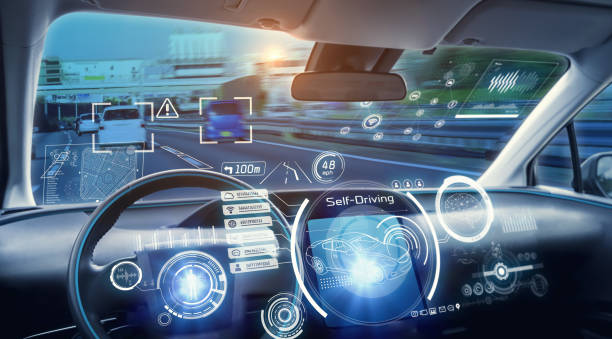Holographic Displays: The Next Frontier in Automotive Interface Design
Imagine sliding into the driver's seat of your car, but instead of a traditional dashboard, you're greeted by a shimmering, three-dimensional display floating in mid-air. This isn't science fiction - it's the cutting-edge world of holographic displays in automotive design. As we accelerate towards a future where cars are increasingly connected and intelligent, the way we interact with our vehicles is undergoing a radical transformation.

However, these flat displays have limitations. They require drivers to shift their gaze away from the road, potentially compromising safety. Enter holographic technology - a groundbreaking solution that promises to revolutionize how we perceive and interact with information while driving.
How Holographic Displays Work
Holographic displays in automobiles utilize advanced optical techniques to project three-dimensional images that appear to float in space. Unlike traditional 3D displays that require special glasses, automotive holograms are visible to the naked eye. These systems typically employ a combination of lasers, mirrors, and spatial light modulators to create the illusion of depth and volume.
One promising approach is the use of volumetric displays, which create images by illuminating points in a 3D space. Another method involves light field displays, which simulate the way light rays would behave if they were emitted by a real 3D object. These technologies allow for true 3D visualization without the need for headgear or eyewear, making them ideal for automotive applications.
Benefits of Holographic Displays in Cars
The advantages of holographic displays in vehicles extend far beyond their futuristic appeal. Safety is perhaps the most significant benefit. By projecting critical information directly into the driver’s line of sight, holographic displays reduce the need to look away from the road. This heads-up approach can significantly decrease reaction times in critical situations.
Customization is another key advantage. Holographic interfaces can be easily reconfigured to suit different driving modes or personal preferences. For example, a sporty driving mode might emphasize performance metrics, while a more relaxed setting could prioritize navigation and entertainment information.
Spatial awareness is also enhanced with holographic displays. By presenting information in three dimensions, these systems can provide a more intuitive representation of the vehicle’s surroundings, improving situational awareness for drivers.
Challenges and Technological Hurdles
Despite their potential, holographic displays face several challenges before widespread adoption in the automotive industry. One of the primary obstacles is ensuring visibility in varying lighting conditions. Bright sunlight can wash out holographic projections, while darkness can cause unwanted reflections. Engineers are working on adaptive brightness systems and advanced anti-glare coatings to address these issues.
Another challenge is creating a user interface that is both intuitive and minimally distracting. While the technology allows for stunning visual effects, the primary goal must remain driver safety. Balancing information density with ease of use is a delicate task that requires extensive human factors research and real-world testing.
Power consumption is also a concern, particularly for electric vehicles where energy efficiency is paramount. Current holographic systems can be power-hungry, and optimizing their energy use is a key area of development.
The Road Ahead: Integration and Innovation
As holographic display technology matures, we can expect to see increasing integration with other automotive systems. Augmented reality (AR) is a natural companion to holographic displays, overlaying digital information onto the real world. Imagine navigation arrows that appear to float on the road ahead or warning signs that highlight potential hazards in real-time.
Voice control and gesture recognition are likely to play a significant role in interacting with holographic displays. These hands-free input methods align perfectly with the goal of minimizing driver distraction while maximizing the utility of the advanced visual interface.
The potential applications extend beyond the driver’s seat. Passenger entertainment systems could benefit from holographic displays, offering immersive experiences without the need for individual screens. This could revolutionize the way we think about in-car entertainment and productivity.
Conclusion: A Holographic Horizon
Holographic displays represent a paradigm shift in automotive interface design. By bringing information into the three-dimensional space of the vehicle interior, they promise to enhance safety, improve the driving experience, and open up new possibilities for in-car technology.
As automakers and tech companies continue to invest in this technology, we can expect rapid advancements in the coming years. While challenges remain, the potential benefits of holographic displays are too significant to ignore. As we look to the future of automotive design, one thing is clear: the way we interact with our vehicles is about to become a lot more dimensional.





